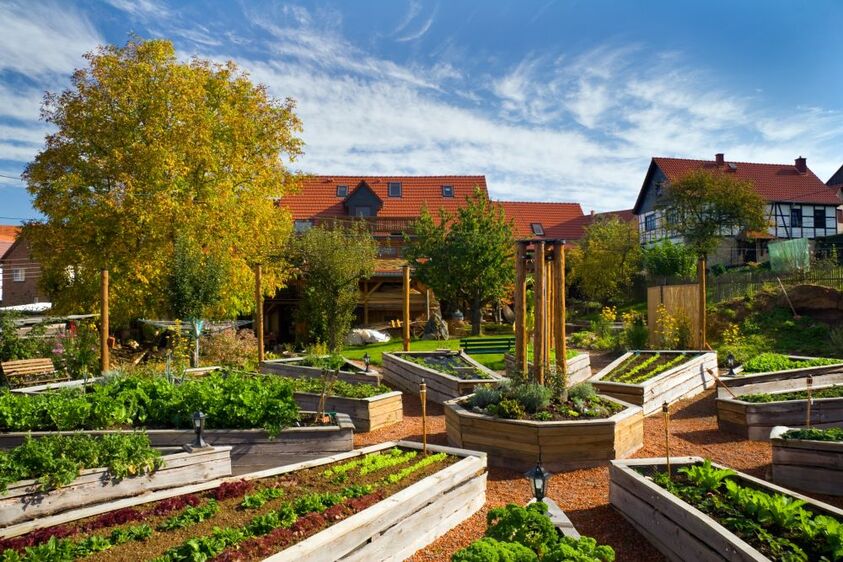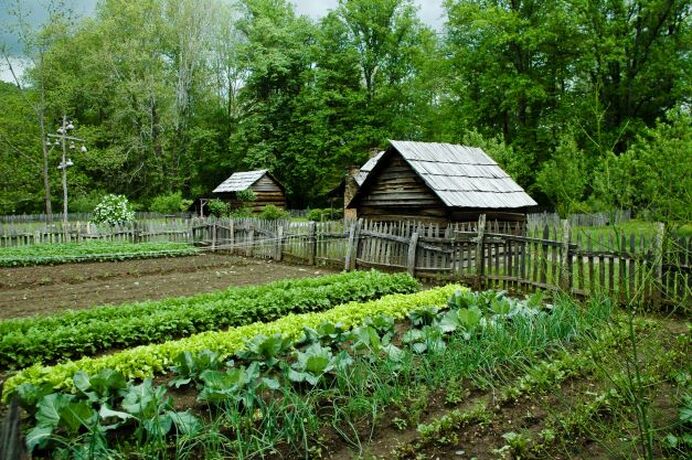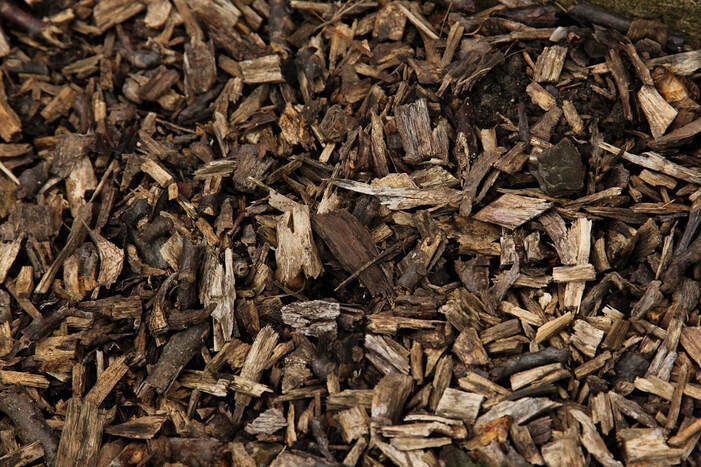|
This article contains affiliate links
Not only can vegetable gardens be a great way to grow fresh vegetables they can also be fun.
The process of building and developing your own growing areas is all a part of the excitement! The robust, physical exercise, involved in working the ground can be extremely good exercise. The endorphins from physical labour, fresh air and organic produce can be a life changing combination! Consequently, so many people become completely hooked on vegetable gardening. As vegetable gardens are always evolving and improving it is always productive to seek new innovations. This is why I have listed 18 exciting vegetable garden ideas for you this growing season. 1. Grow over pergolas
The most productive vegetable gardens make use of as much sunlight as possible. A great way to do this is with a pergola structure. These can come in a wide variety of styles, materials and are readily available from garden suppliers. However, garden pergolas are also relatively easy to build with some basic DIY skill. Timber pergolas can be very effective for supporting rambling vegetables such as beans and squash. 2. Embrace perennial vegetables
When many think of perennial vegetables they instantly visualise crops like rhubarb and asparagus. However, there are actually many less well known perennial vegetables which can also be planted. Increasingly popular varieties such as Sorrel, Perennial leeks, Wild celery, Sea kale and Oca are just some of these. To see a full comprehensive list of 26 perennial vegetables visit an informative article here. 3. Grow mushrooms in shade
Shady areas are normally seen as having no opportunity for producing food crops. However, damp shady environments are perfect for growing many different types of mushrooms. Some great examples of these are chestnut, oyster and shiitake mushrooms. These can either be grown on inoculated logs, woodchips or cardboard. To start your mushroom growing journey why not visit an online mushroom growing supplier. 4. Raised growing bedsOne of the most effective ideas for a new vegetable garden is building raised beds. Raised beds allow you to provide a good quality and deep growing medium. This enables vegetables to grow large and healthy. Raised growing beds are also very well drained which prevents soil from becoming boggy and stagnant. Raising growing areas up will allow your vegetables to access more sunlight in the mornings and afternoons. 5. Utilise fences
Fences are typically a missed opportunity when it comes to growing extra vegetables. These vertical structures can actually be perfect for climbing fruit and vegetables. This is especially so if your fence line is in full sunlight during the day. Trellis and simple cable systems can easily be attached to fence posts and panels. These make the perfect climbing frames for peas, beans and squash. 6. Dining areasA vegetable garden designed around an outside growing area is actually a very practical idea. There is nothing quite like a late afternoon meal by your vegetable plot in summer. Looking over your growing vegetables will create a pleasant, relevant and contextual backdrop. Why not create a simple seating area with a table and chairs in your vegetable garden? 7. Wildlife ponds
Wildlife ponds are not typically associated with vegetables gardens but are actually a very good idea. Not only are these ponds good for wildlife they can actually help vegetables to stay pest free. Wildlife ponds can encourage a whole range of beneficial creatures to your garden and vegetable plot. Some of these will consume large quantities of vegetable garden pests such as slugs, caterpillars and aphids. 8. Summer houses
A typical mistake many make is hiding their vegetable gardens at the bottom of the garden. You will get the very most out of your growing beds if they become a central feature. An effective way to do this is to install a summer house next to your vegetable garden. This will become a great place to hang out and look over your masterpiece. On sunny mornings you will gravitate towards your eco retreat for that first coffee of the day. 9. Mulch
Some typical issues for vegetable gardens are weeds, fertility and drying out during the summer months. Mulching your vegetable areas soil is an effective way to reduce all three of these problems. Mulch will help to lock in moisture, feed the soil and prevent weed seedlings from germinating. Consequently, mulching your crop growing areas is a very good vegetable garden idea. 10. Storage sheds
A main problem when growing vegetables is producing too much of a harvest glut at once. This can be mitigated by sowing vegetables in succession and staggering cropping times. However a great way to maximise your cropping is by installing a storage shed. Providing a cool and dark place to store harvested vegetables is perfect for maximising your produce. 11. Polytunnels
If there is one thing that can really boost your vegetable gardens output it’s a polytunnel. Polytunnels can provide a much longer growing season by locking in warmth from the sun. This makes them perfect for growing exotic crops such as chillies, melons and aubergines. There is now a wide range of plastic tunnels now on the market. To avoid them being broken apart by strong winds invest in products with a screw together metal frame. Also make sure you have a robust method of anchoring them well to the ground. 12. Companion plantingCompanion planting is a system of planting which combines various plant species for mutual benefit. This can be particularly effective within vegetable gardens to confuse and ward off pests. Some pests can actually be repelled by the smell of other herbs, flowers and vegetables. Consequently, companion rows or groupings of mutually beneficial species are grown together. This can enable you to grow vegetables pest free without the need for chemicals. 13. Green walls
Green walls now come in a wide variety of products and systems. The basic idea of green walls is to stack growing areas vertically to maximise cropping. This allows for an efficient use of space and maximises sunlight. However, you may not need to invest in an expensive modular green wall system. Vegetables can be grown in a series of vertically stacked window box and hanging basket systems. This is a great vegetable garden idea if you have a sunny wall in a small garden space. 14. An outside kitchen
If you really want to make your vegetable garden a true kitchen garden why not bring the kitchen outside? Outside kitchens have become increasingly popular over the past decade. Custom built units can include expansive work surfaces and even outdoor ovens. In reality all you need is a clean and impervious surface to chop and prepare your favourite vegetables. This can make your vegetable garden truly interactive and entertaining! 15. Boundary fencing
As blessed as you may feel for having wildlife in your garden not all wildlife is welcome. Rabbits and deer can be beautiful to look at but they can make short work of your vegetables. Once they know you have tender vegetables there it is very difficult to keep them out. If you have such wildlife locally it is a good idea to erect boundary fencing with an access gate. 16. Compost heaps
It is very common for vegetable gardeners to have compost heaps but rare to combine the two. Small, secondary, compost heaps can be integrated into vegetable gardens for a couple of reasons. Firstly, compost heaps can act as miniature hibernacula’s which provide shelter for beneficial wildlife. This can encourage natural pest control reducing the need for pesticides. Composting material can also make the perfect growing medium for crops like summer and winter squash. 17. Solar drier
Sometimes the most important part of a vegetable garden is making use of what you grow. There is no point of going to all the effort of caring for your vegetables if you do not utilise them all. One of the most eco friendly and useful ways to preserve garden vegetables is by drying them. Dried vegetables can then be jarred and rehydrated when needed during cooking. The best way to dry your vegetables is by slicing them thinly and using a solar dryer. This uses the heat of the sun and air convection currents to dry vegetables naturally. 18. Cold frames
The most challenging part of any vegetable gardens season is the early spring. During this time young seedlings are vulnerable to frost, hail and multiple pests. Warm spring days can lure any vegetable gardener into a false sense of security. Consequently every vegetable garden should have a cold frame. Not only do these robust, miniature, greenhouses protect from pests they also shelter from bad weather. Cold frames can become one of the most vital parts of a productive vegetable garden.
Thank you for reading our article on 18 vegetable garden ideas. If you require a vegetable garden designer or builder do not hesitate to contact us.
Below I will link to some other useful vegetable garden articles you may find relevant.
'As an Amazon Associate I earn from qualifying purchases'
0 Comments
Leave a Reply. |
The Author
|
Landscaping services across Buckinghamshire, Amersham, Aylesbury & High Wycombe
Hyde Heath, Amersham, Buckinghamshire |
|































